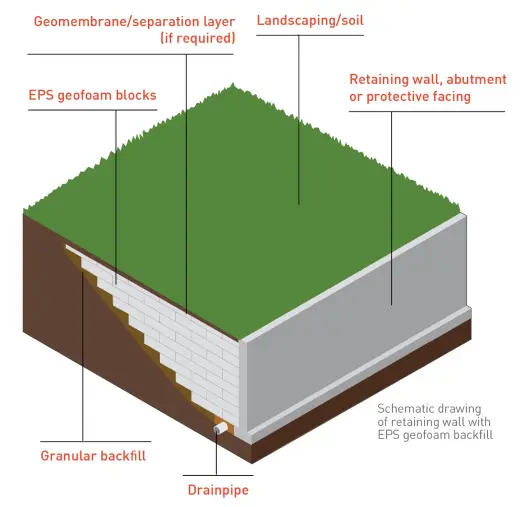Most people are surprised to learn geofoam is flexible to the point that it can be used for retaining wall backfills and even buried wall backfills. Rely on geofoam for backfilling behind the retaining walls on your property and you will significantly decrease the lateral pressure. This is possible as geofoam has such a light weight. Though geofoam is quite light, it has an inherently high compressive resistance, making it perfect for retaining wall backfills and other buried structures. Keep in mind the pressure placed upon a retaining wall is dictated by the weight of the backfill.

Alternatively, if you were to opt for comparably heavy traditional options used for backfill and you would need a robust structure. The use of geofoam within backfill soil does not mandate an uber-strong retaining wall. The end result of a reliance on geofoam is a savings of both money and time. Furthermore, geofoam is favored as it prevents powerful horizontal forces from developing amidst catastrophes such as earthquakes.
All in all, geofoam blocks weigh around 100 times less than conventional materials used for retaining walls. This light weight facilitates geofoam’s use for retainment walls and other buried structures, making the building of such walls that much easier, efficient, and quick. Add in the fact that geofoam is inherently resistant to water and you have even to use it for retaining walls. The material’s inherent water-resistance greatly enhances its resistance to wear and tear as time progresses. Unlike other materials used for retaining walls, geofoam does not rot, decompose or leak down into the ground as time progresses. Rely on geofoam for your retaining wall backfill and you will be more than pleased with its performance across posterity.